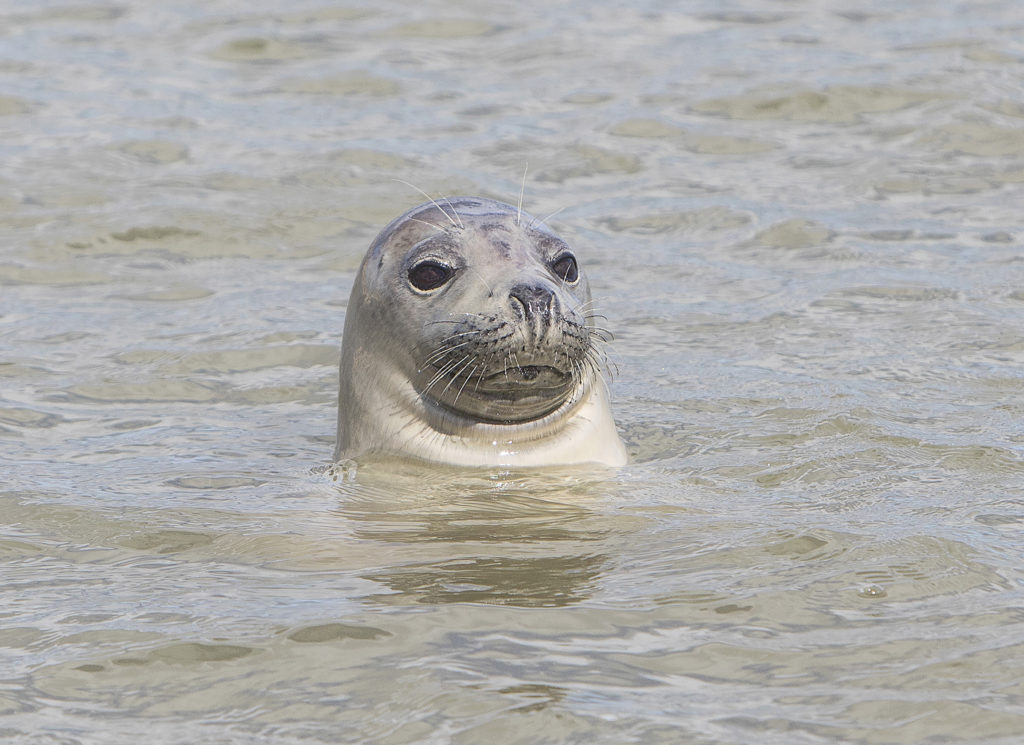
An autopsy has found that blasting work carried out at the Aberdeen harbour expansion project “cannot be ruled out” in the death of a young grey seal.
The animal was found dead at the Nigg Bay site in September and sent to the Marine Animal Strandings Scheme (MASS) for testing.
Concern was raised that underwater blasting at the £350m development, which started the month previously, may have played a hand in the creature’s death.
An interim necropsy report has now found a pneumonia infection caused the death, but added that damage found to the brain and ears means blasting work “cannot be categorically ruled out”.
The report added that the animal could have been put in “significant stress” if it was exposed to severe noise while suffering from the illness.
In response, Aberdeen Harbour said marine mammal observers are in place “prior to and during all drilling and blasting operations” and that “no seals have been observed” during these times within the mitigation zone.
Further analysis is now being undertaken on damage to the animal’s brain which the report said “would not be inconsistent with exposure to underwater sound”.
Licensing laws mean that observations for marine life have to be carried out within a 1km radius, 30 minutes before a blast.
However, Mark Carter, a marine biologist from campaign group Seal Scotland, said questions still need answered.
He said: “They say it is a strict regime and they say they look out a kilometre for 30 minutes beforehand but with a young seal, especially when it’s ill, will you see it in those conditions?
“It’s certainly not as robust as they suggest.”
Although the animal was found in “extremely fresh” condition, the report states the ears, which showed haemorrhaging, were not tested further due to “excessive time elapsed since death”.
The report also places a strong confidence rating in the diagnosis of pneumonia, but Mr Carter argues it is not so clear.
He said: “It was probably pneumonia that ultimately killed the seal but the question is, was it ill when it was subjected to the noise?
“To me the cause of death is not 100% certain, it’s probably between 70% and 90%.”
A spokeswoman for Aberdeen harbour said: “The pathologist report has concluded that the animal exhibited disease pathology (specifically, verminous broncho-pneumonia), which is severe enough to account for the death of the animal.
“Experienced marine mammal observers are in place prior to and during all drilling and blasting operations within Nigg Bay, in accordance with the requirements of the Marine Licence, and no seals have been observed in the mitigation zone prior to any drilling and blasting activities.”
A spokeswoman for developer Dragados said: “Dragados UK have a detailed Environmental Mitigation Plan with, all the necessary measures to minimise the impact of our activities on the local fauna and flora. This plan was agreed with the relevant authorities and Dragados UK enforce compliance on site using both technology and experienced Marine Mammal Observers to ensure minimal impact on any Marine Mammals in the area during marine operations.
“The Dragados team on site identified the seal carcass and collaborated with all the relevant authorities to clarify the causes of the seal’s death by reporting it as soon as it was discovered, recovering the body and procuring the necropsy report from an independent third party pathologist with the necessary expertise in this field.
“The Pathology report concludes that the seal carcass exhibited disease severe enough to account for the death of the marine mammal.”
